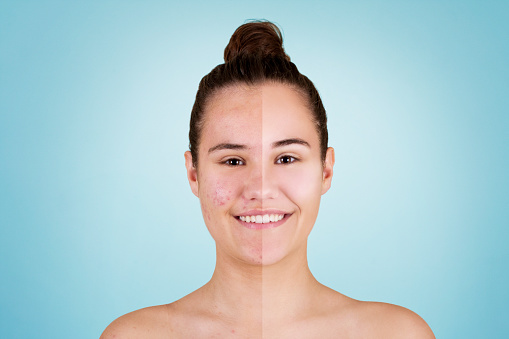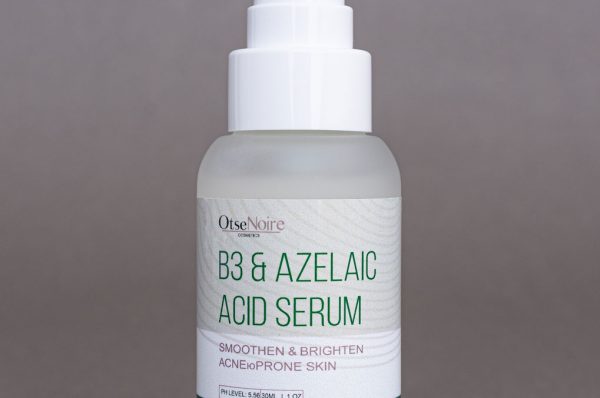MANDELIC ACID: WHAT IS IT?
Mandelic Acid, which is generated from bitter almonds, is excellent for sensitive skin since it penetrates the surface at a slower rate and causes less irritation. It is still strong, though, and has a big molecular size. Because of this crucial ingredient’s demonstrated melanin-inhibiting advantages in reducing dark spots, hyperpigmentation, and post-acne markings, we have chosen to emphasize it. Mandelic Acid functions as an exfoliator, boosting cell turnover to smooth out the skin tone in addition to prevention.
Given its exfoliating and skin-brightening qualities, mandelic acid is a type of alpha-hydroxy acid (AHA) that is frequently utilized in skincare products. When hyperpigmentation is caused by sun damage or post-inflammatory hyperpigmentation (PIH) from skin problems like acne, it can be helpful in removing it.
The effects of mandelic acid on hyperpigmentation are as follows:
1. Exfoliation: Mandelic acid aids in the removal of dead skin cells by exfoliating the top layer of the skin. It might help to expose newer, brighter skin and gradually lessen hyperpigmentation by removing these aging and damaged cells.
2. Melanin, the pigment that gives our skin color, is inhibited from being produced: Tyrosinase, an enzyme necessary for the formation of melanin, has been reported to be inhibited by mandelic acid. It can aid in reducing hyperpigmentation and evening out skin tone by reducing melanin production.
3. Mandelic acid has a greater molecular size than other AHAs like glycolic acid, which causes it to permeate the skin more slowly and delicately: It is gentle and suited for all skin types. Due to this characteristic, it is suitable for people with sensitive skin or those who might become irritated by harsher acids.
It’s crucial to adhere to the following rules when using mandelic acid to treat hyperpigmentation:
Start with a lower concentration: If this is your first time using mandelic acid, start with a lower concentration (between 5% and 10%) and then gradually raise it as your skin adjusts. This lessens the possibility of inflammation.
Patch test: It is advised to conduct a patch test on a small area of skin before using mandelic acid on your face to check for any negative responses or sensitivity.
Protect your skin from more sun damage, which can exacerbate hyperpigmentation, by using sunscreen: When taking mandelic acid throughout the day, consistently apply a broad-spectrum sunscreen with an SPF of 30 or higher.
Be persistent and patient because outcomes can vary from person to person and hyperpigmentation takes time to go away: Sticking to your skin care regimen and giving the mandelic acid adequate time to work is critical. Results usually become apparent after many weeks or months of consistent use.
Take expert advice into account: If you have severe hyperpigmentation or have questions about using mandelic acid, you should speak with a dermatologist or other skincare specialist. They can evaluate your particular skin issues and make tailored advice.
Mandelic acid can be useful for treating hyperpigmentation, however as every person has different skin, specific results may vary, but rest assured https://otsenoire.com/product/mandelic-acid-overnight-gel/ works for all skin types, I recommend. Visit https://otsenoire.com/ for more information.




Comments (5)